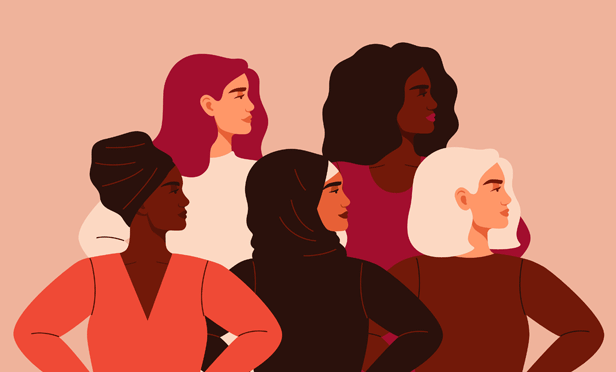DETROIT—The great migration of residents into US downtowns is a phenomenon seen not just in top core cities such as New York, San Francisco and Chicago, but also in cities that some people might find surprising. Detroit is one such city, and even though it has made national headlines for its municipal bankruptcy and general decline, its CBD at the same time saw a remarkable influx of companies, and multifamily developers have followed in their wake.
Thousands of units have been developed in just the past few years, many in old warehouse-type structures adjacent to the downtown that were vacant or underutilized. And eager tenants have flooded the area. About 98% of downtown units are occupied, and builders have started breaking ground on new buildings to satisfy the robust demand.
The Albert at Capitol Park was first built in 1929 as an office building, but was recently renovated by Broder & Sachse Real Estate Services into a 127-unit multifamily that has all “the services you might find more typically in a hotel,” Richard Broder, chief executive officer, tells GlobeSt.com, including a full-time concierge, community living room, workout facilities, bike storage and a dog-washing service.
The building is fully-leased, he adds, to a diverse set of tenants that range from millennials to empty-nesters. Broder had expected that most residents would be downtown workers interested in living close to their offices, but company officials got surprise as the building filled up. About one-third to one-half still work in the Detroit suburbs.
“People want to live downtown, and it's a lifestyle choice,” he says. “That was very enlightening for us.”
That strong attraction has multifamily developers in downtown Detroit feeling very confident these days. Broder & Sachse has even launched new construction. In December, it will put the finishing touches on The Scott at Brush Park, 199 apartments and studios that will also include 15,000 square feet of retail and parking for 300 cars. “It has been years and years and years since someone developed a new multifamily,” says Broder. The building is already nearly half-leased.
However, “I expect to see tons of this in the future,” he adds. “The trajectory is very strong and sustainable. First of all, there continues to be job growth both in downtown and Midtown,” the adjacent neighborhood that connects the CBD to Wayne State University. Quicken Loans, for example, has bought and renovated a whole set of office buildings and moved thousands of its employees in from the suburbs.
Although much of this vast city still suffers from the effects of underutilization or abandonment, it now has a core area comprising the downtown, Midtown, riverfront, Wayne State , the Medical Center area with Henry Ford Hospital and the Children's Hospital of Michigan, and the Arena District with its gleaming new sports facilities like the Detroit Tigers' Comerica Park, that pulses with activity and street life. Restaurants and retail are returning to these neighborhoods, and every month seems to see a new firm following Quicken's lead and migrating from the suburbs to the CBD.
And developers have by no means exhausted the supply of historic buildings that can become multifamily residences, Broder says. For example, developers have already started renovations of historic structures in residential neighborhoods such as Lafayette Park, just to the east of downtown. “There is a lot of ground to cover.”
DETROIT—The great migration of residents into US downtowns is a phenomenon seen not just in top core cities such as
Thousands of units have been developed in just the past few years, many in old warehouse-type structures adjacent to the downtown that were vacant or underutilized. And eager tenants have flooded the area. About 98% of downtown units are occupied, and builders have started breaking ground on new buildings to satisfy the robust demand.
The Albert at Capitol Park was first built in 1929 as an office building, but was recently renovated by Broder & Sachse Real Estate Services into a 127-unit multifamily that has all “the services you might find more typically in a hotel,” Richard Broder, chief executive officer, tells GlobeSt.com, including a full-time concierge, community living room, workout facilities, bike storage and a dog-washing service.
The building is fully-leased, he adds, to a diverse set of tenants that range from millennials to empty-nesters. Broder had expected that most residents would be downtown workers interested in living close to their offices, but company officials got surprise as the building filled up. About one-third to one-half still work in the Detroit suburbs.
“People want to live downtown, and it's a lifestyle choice,” he says. “That was very enlightening for us.”
That strong attraction has multifamily developers in downtown Detroit feeling very confident these days. Broder & Sachse has even launched new construction. In December, it will put the finishing touches on The Scott at Brush Park, 199 apartments and studios that will also include 15,000 square feet of retail and parking for 300 cars. “It has been years and years and years since someone developed a new multifamily,” says Broder. The building is already nearly half-leased.
However, “I expect to see tons of this in the future,” he adds. “The trajectory is very strong and sustainable. First of all, there continues to be job growth both in downtown and Midtown,” the adjacent neighborhood that connects the CBD to Wayne State University. Quicken Loans, for example, has bought and renovated a whole set of office buildings and moved thousands of its employees in from the suburbs.
Although much of this vast city still suffers from the effects of underutilization or abandonment, it now has a core area comprising the downtown, Midtown, riverfront, Wayne State , the Medical Center area with Henry Ford Hospital and the Children's Hospital of Michigan, and the Arena District with its gleaming new sports facilities like the Detroit Tigers' Comerica Park, that pulses with activity and street life. Restaurants and retail are returning to these neighborhoods, and every month seems to see a new firm following Quicken's lead and migrating from the suburbs to the CBD.
And developers have by no means exhausted the supply of historic buildings that can become multifamily residences, Broder says. For example, developers have already started renovations of historic structures in residential neighborhoods such as Lafayette Park, just to the east of downtown. “There is a lot of ground to cover.”
Want to continue reading?
Become a Free ALM Digital Reader.
Once you are an ALM Digital Member, you’ll receive:
- Breaking commercial real estate news and analysis, on-site and via our newsletters and custom alerts
- Educational webcasts, white papers, and ebooks from industry thought leaders
- Critical coverage of the property casualty insurance and financial advisory markets on our other ALM sites, PropertyCasualty360 and ThinkAdvisor
Already have an account? Sign In Now
*May exclude premium content© 2025 ALM Global, LLC, All Rights Reserved. Request academic re-use from www.copyright.com. All other uses, submit a request to [email protected]. For more information visit Asset & Logo Licensing.









